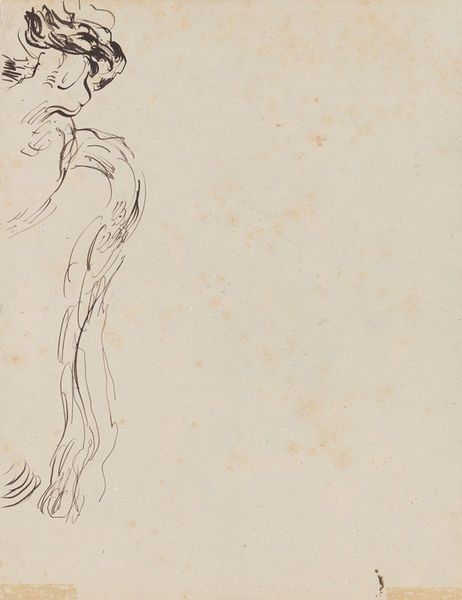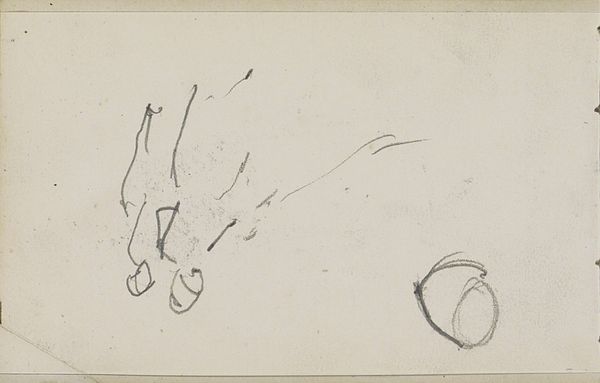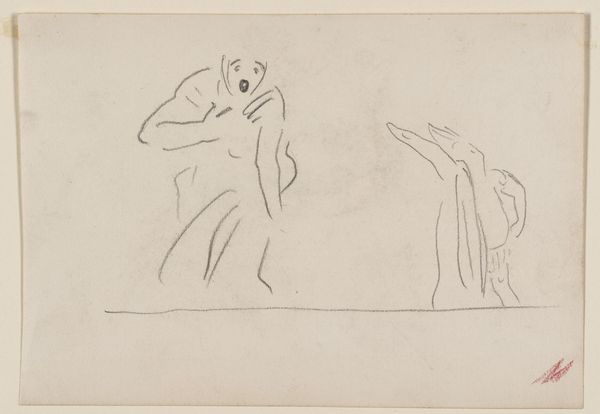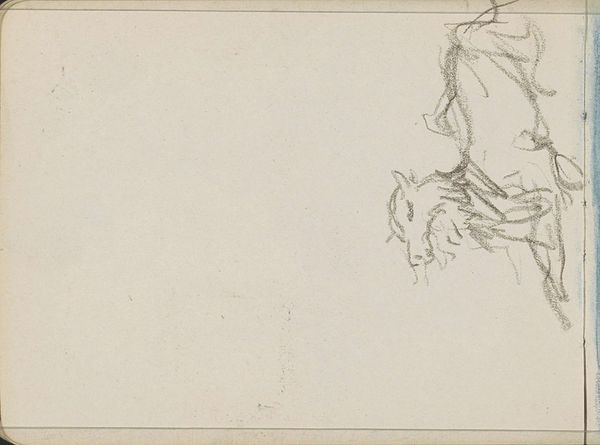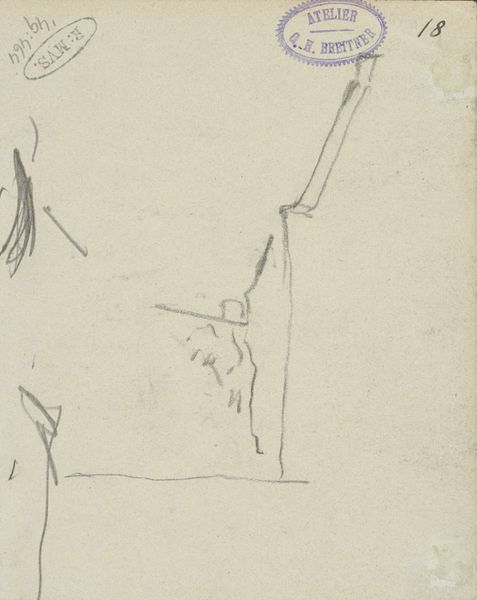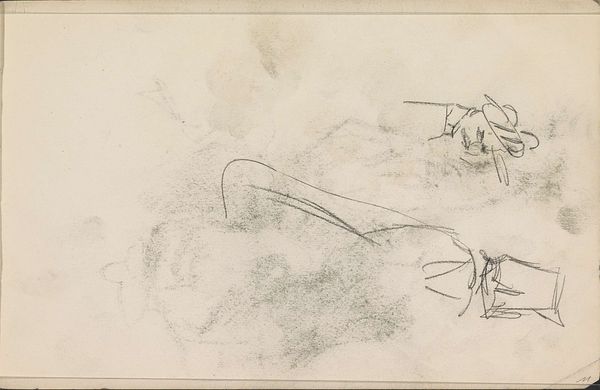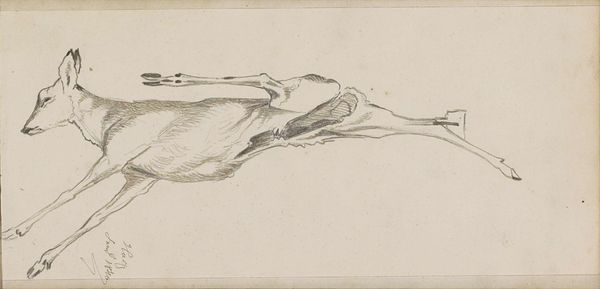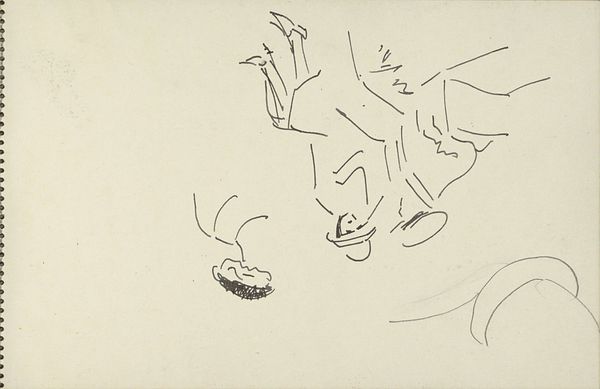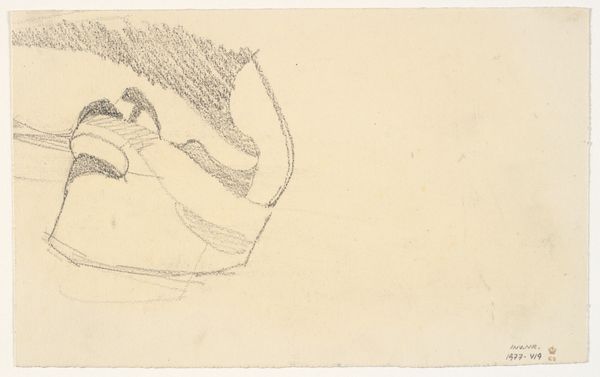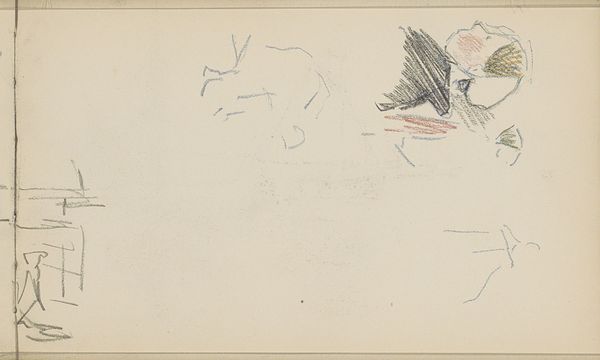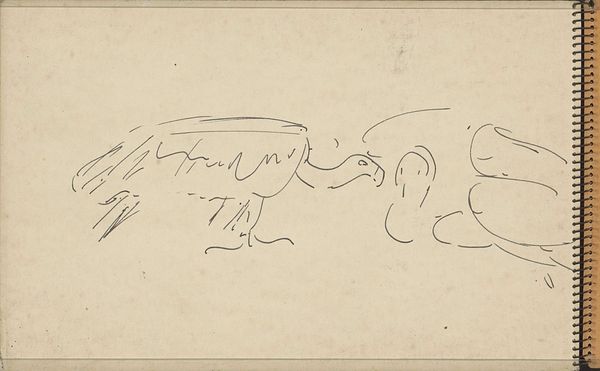
drawing, paper, pencil
#
portrait
#
drawing
#
pencil sketch
#
paper
#
pencil
#
realism
Dimensions: height 140 mm, width 90 mm
Copyright: Rijks Museum: Open Domain
Editor: This is "Head of a Heron or Pelican" by Jan van Essen, likely created sometime between 1864 and 1936. It's a pencil drawing on paper, and it’s currently held at the Rijksmuseum. The sketch feels so immediate, almost like a fleeting observation. What strikes you about its visual form? Curator: The drawing excels in its economy of line. Consider the swift, confident strokes defining the bird's eye and beak, contrasted with the softer, more ambiguous treatment of the plumage. This interplay establishes a focal point, guiding the viewer’s gaze directly to the perceptive eye. How does the artist use hatching to create tonal variation and volume? Editor: The hatching definitely gives form to the head, particularly around the eye socket and along the beak. It seems strategically placed to give depth, though quite sparse overall. Curator: Precisely. Notice the negative space also performs a crucial function, suggesting the form continues beyond the depicted area. This strategic incompleteness invites the viewer to participate, mentally completing the form and engaging with the artwork on a more personal level. Are there other elements that direct your focus? Editor: I hadn't thought of the incompleteness as an invitation, that's fascinating. I notice the stamp at the bottom left, though it obscures some of the drawing; its circular shape seems to almost frame the beak. Curator: Yes. Although functional, its presence intersects with the representational space of the drawing. This can be regarded as an aesthetic choice to insert meta-commentary on art production through imprints. What meaning could the semiotics of this placement hold? Editor: Interesting. Perhaps its about authenticating the artwork with Van Essen's studio stamp. Overall, I appreciate the drawing's simplicity and how Van Essen captures the essence of the bird with such minimal effort. Curator: Indeed, the essence of the drawing resides in the structural deployment of a reduced language which communicates meaning outside representational imitation.
Comments
No comments
Be the first to comment and join the conversation on the ultimate creative platform.
